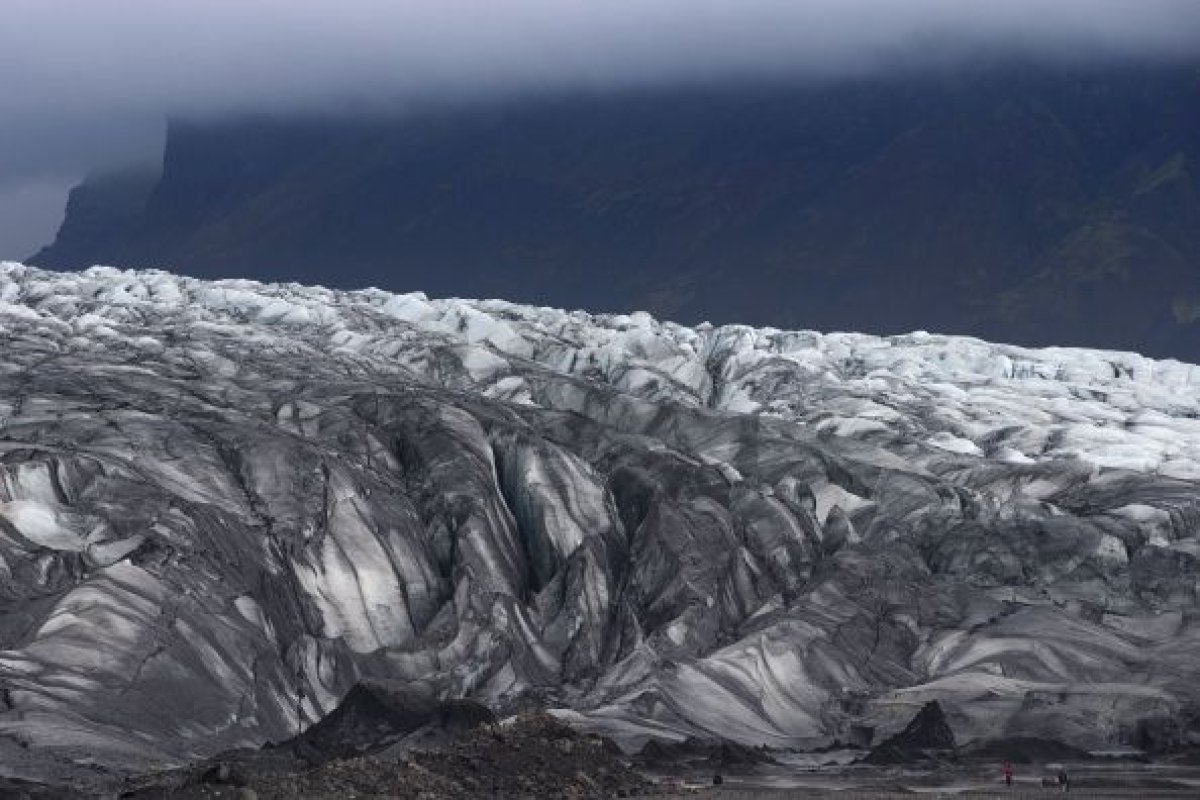
Giant holes, some as much as 1,300 feet wide, have opened up in Iceland's largest glacier, the result of geothermal heat waves caused by volcanic eruptions.
Following fierce activity near the Vatnajökull glacier between 2014 and 2015, seismic eruptions have changed the landscape of the region in its entirety, leading to increased temperatures from the earth.
Geologist Magnús Tumi Gudmundsson told the Icelandic news agency RUV that the waves of heat energy emanating from the volcanic rock below had melted through ice hundreds of feet thick, forming the remarkable holes known as calderas.
The creation of the giant holes means that the ground beneath the glacier has been left exposed for the first time in hundreds or thousands of years, since the glacier itself was formed.

In the wake of the recent volcanic eruptions in the area, known as Bárdarbunga, Gudmundsson has warned authorities and researchers of the need to be vigilant against the creation of any more calderas, which raise the likelihood of a glacial flood.
These floods, known by their Icelandic name (jökulhlaup), occur when the dam that contains a glacial lake fails. They can occur simply as the result of a buildup in pressure but are more likely to be caused by a volcanic eruption or earthquake.
In 2010, the second eruption of the Icelandic volcano Eyjafjallajökull from a glacier-covered vent caused the emergency evacuation of 800 people living in the flood zone. The glacial melt raised local river levels by as much as 10 feet and caused the closure of major roads.
The Vatnajökull icecap is the second largest glacier in Europe. It covers some 8 percent of Iceland, running over the top of several volcanos. Over the years, seismic activity has led to a series of glacial floods in the area.
Calderas, when they do not appear through melted glacial ice, form from collapsed volcanoes. The massive craters are created when huge volcanic explosions blow out the sides of the volcano, or the surface rock falls into an empty magma chamber.
The eruption of a supervolcano in Yellowstone National Park formed a caldera about 50 miles across that lies beneath most of the park itself. Yellowstone is a hot spot for geothermal and seismic activity. The geysers and hot springs in the park are formed by the same kind of heat energy that formed the holes in the Vatnajökull glacier.
On average, Yellowstone sees around 1,500 to 2,000 earthquakes per year. Of those, 40 to 50 percent occur as part of earthquake swarms.
Uncommon Knowledge
Newsweek is committed to challenging conventional wisdom and finding connections in the search for common ground.
Newsweek is committed to challenging conventional wisdom and finding connections in the search for common ground.
About the writer
Callum Paton is a staff writer at Newsweek specializing in North Africa and the Middle East. He has worked freelance ... Read more
To read how Newsweek uses AI as a newsroom tool, Click here.








